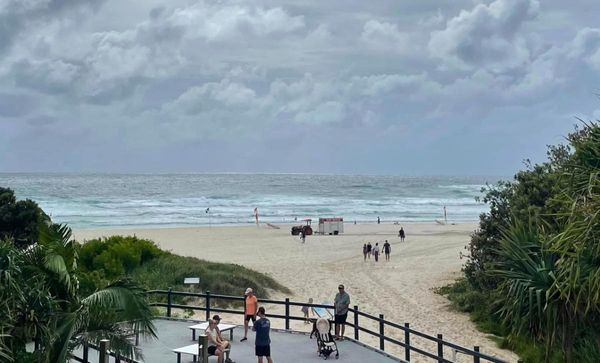
Bucharest’s most notorious building sits atop a small hill in the centre of the city, appearing squat despite its 84-metre height, due to its vast length and breadth. The Palace of the Parliament, as it is now called, is a monument to dictatorial folly whose benefactor was executed before he could see it completed.
Christmas Day will mark 30 years since Romania’s communist-era dictator, Nicolae Ceaușescu, was tried and shot dead along with his wife, as the last revolution of 1989 swept through what was perhaps the communist bloc’s most repressive state.
Yet in a strange twist of fate, three decades after the Ceaușescu’s fall, his sinister fortress still dominates a whole quarter of central Bucharest. The building, planned to house every ministry under one supersized roof and act as the nerve centre for the entire communist government, today hosts Romania’s parliament.

As the anniversary approaches, the building is a very visual reminder to the country’s political elite and residents of the capital of the communist past.
Călin Popescu-Tăriceanu, who as president of the Romanian senate until earlier this year had the vast office that in the initial plan was meant to belong to Ceaușescu, said the first thing he did when he took over the office was to get a priest to come in and perform prayers.

“When I first came here there was a huge globe, and I had this image in my mind of the dictator of Chaplin when he’s sitting on the desk and turning the globe,” he said.
He was so disturbed that he had furniture, including a comically large desk, removed from the room. He replaced it with one half the size, that is still several times bigger than any normal desk. Across the room, a table set with 14 chairs looks isolated in the large expanse of the room.
“The office must be a place where when you invite people and they feel a little bit comfortable, and you can make a friendly atmosphere, but this size is exactly the opposite, it’s creating distance between you and your guests,” he said.
The array of statistics about the building are as overwhelming as its never-ending corridors: 1mcubic metres of marble, 3,500 tonnes of crystal, 1,100 rooms. Romania’s state-owned factories were put to use creating the interiors: silver brocade curtains, gold-leaf ceilings.

Ceaușescu had the idea to construct the palace after an earthquake in 1977 caused damage to much of the city, and he decided to refashion an entire quarter, with the palace as its centrepiece.
About one-fifth of the city was bulldozed to build the so-called House of the People, the surrounding buildings, and the grand avenue the leads into the distance from the palace, deliberately made wider and longer than the Champs-Élysee. Forty thousand residents were forcibly rehoused. Some buildings were uprooted and rebuilt in different locations; others remained and now stand at strange angles to the new buildings.
Ceaușescu laid the cornerstone in 1984, and by 1989, most of the exteriors were completed but the interiors were not. “They couldn’t afford to demolish the buildings but they also didn’t have the money to mute the dreaded feeling that they exude. They were really profoundly monumental remains of this recent past that everyone wanted to forget,” said Emanuela Grama of Carnegie Mellon University.
The decision was taken to plough on according to the original design, excising only symbols of communism and the cult of personality. Along the way, there were various ideas of how the building might be put to use: the world’s largest shopping mall, or the world’s largest casino. There was even a short-lived plan to use US investments to turn part of the building into a Dracula theme park. In the end, the easiest solution was the most obvious: to leave the building as the centre of government, and locate the two houses of the Romanian parliament inside.

Gaggles of wide-eyed tourists are taken around on tours a few times each day, although the two-kilometre walk takes in just 5% of the building’s rooms. Visitors are shown hall after hall of ever more absurd proportions: one is the size of half a football pitch, with eight chandeliers hanging from the ceiling. The spaces designed for huge portraits of Ceaușescu and his wife, one at each end of the hall, are blank.
The four decades of communism has left Bucharest as possibly Europe’s most architecturally eclectic and chaotic capital city. Decaying art nouveau mansions mingle with brutalist communist architecture. The city sprawls over a huge area and traffic is appalling. Masterplans for urban renewal have been written and ignored.
The quarter around the Palace of the Parliament is perhaps the only area with orderly streets and layout, but has a soulless feel. “The whole ensemble makes no sense in relation to the rest of the city, and does not fit on the city’s main transport axises,” said Andrei Popescu, an urban planner and tour guide.
As the 30th anniversary of Ceaușescu’s execution approaches, rather than destroy his centrepiece, a different approach has been taken: build something even taller. Alongside the palace, construction is under way on what will be the world’s largest Orthodox cathedral, which when completed will reach 30 metres higher than Ceaușescu’s palace.

The Romanian Orthodox church said it accepted the location “as a moral restoration for the five ‘crucified’ churches, three of which were demolished and two of them relocated by the communist regime, in order to build the House of the People”.







